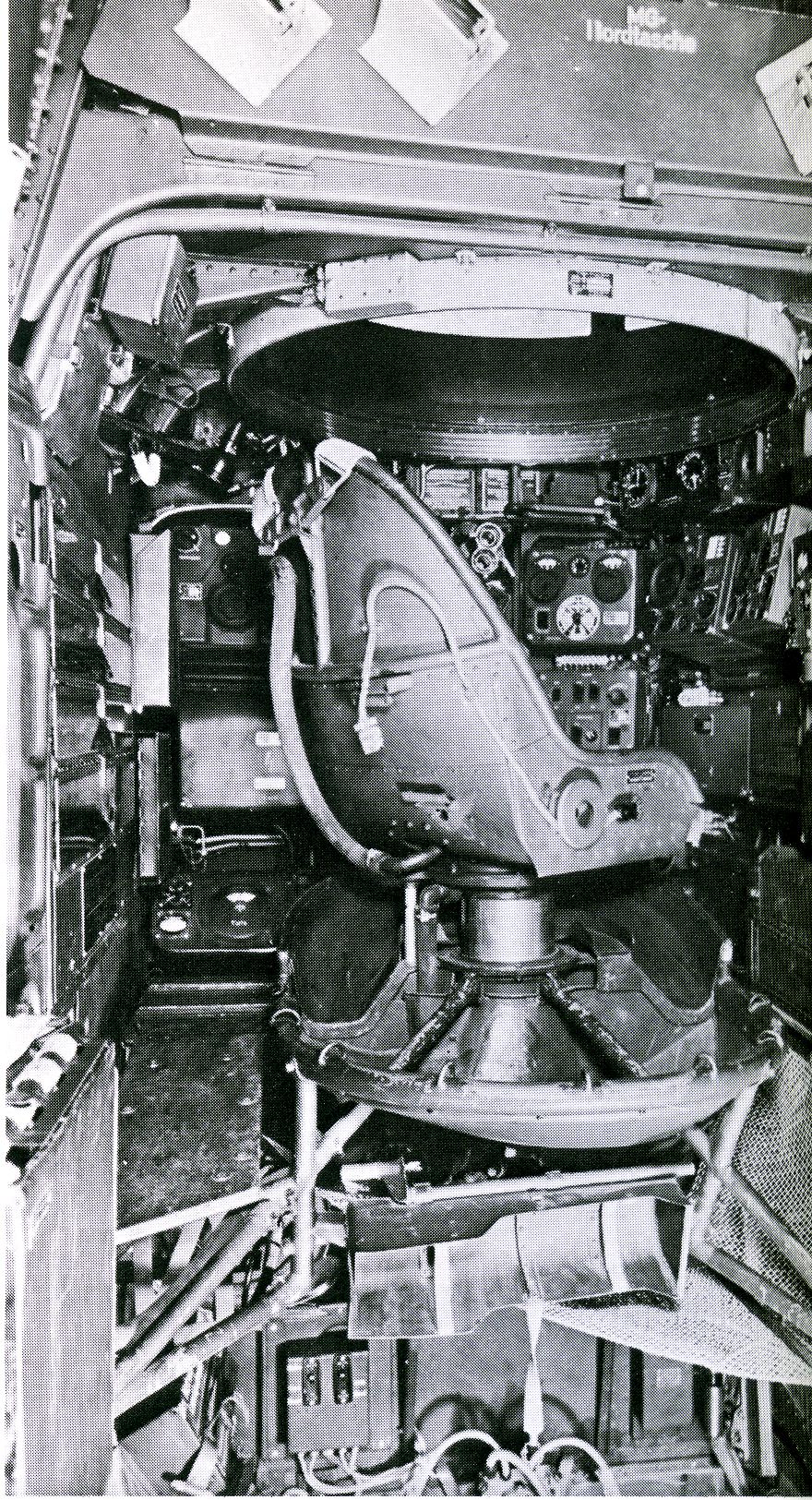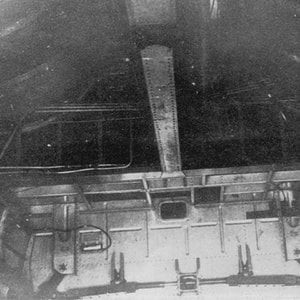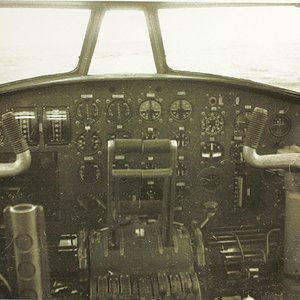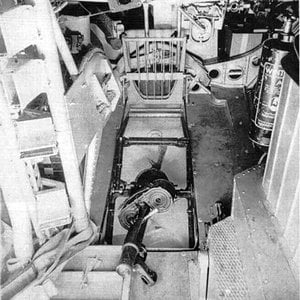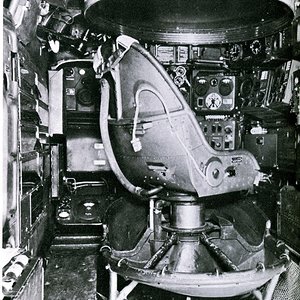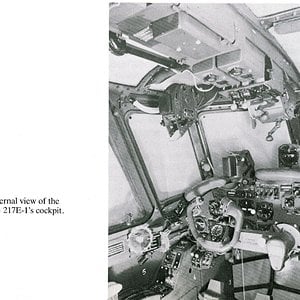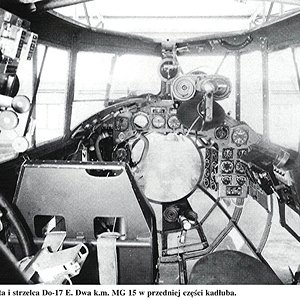Navigation
Install the app
How to install the app on iOS
Follow along with the video below to see how to install our site as a web app on your home screen.
Note: This feature may not be available in some browsers.
More options
You are using an out of date browser. It may not display this or other websites correctly.
You should upgrade or use an alternative browser.
You should upgrade or use an alternative browser.
Flying the Do 217 M-1
In October 1945 British Captain Eric Brown undertook full handling trials with a Do 217 M-1 WNr 56158 at RAF Farnborough. He recalled a distinctly "underwhelming" experience.[98] Brown recalled that he took off with full power of some 2,700 rpm and the lightly loaded Do 217M left the runway at 99 mph (159 km/h). Brown held a shallow climb, waiting to reach 124 mph (200 km/h) before retracting the undercarriage. Brown timed the time it took to retract, which was between 30 and 40 seconds.[98] At 500 feet (150 m) he reduced power to 2,500 rpm and raised the flaps at about 143 miles per hour (230 km/h). With the flaps up a climbing speed of 143 miles per hour (230 km/h) was established giving a rate of "very moderate proportions".[98]
While in cruising mode, Brown took the Dornier to 18,000 feet (5,500 m) and with the tail at +2 degrees angle of incidence, gave it a top speed of 325 miles per hour (523 km/h), true air speed.[98] Brown stated the aircraft was very stable about all three axes, and the controls were well harmonised and effective, and not unduly heavy for bomber operations. At the other end of the speed range, stall occurred at 96 miles per hour (154 km/h), and was characterised by a gentle nose-down pitch.[98] At this stage Brown tried the Dornier's single-engine performance and this "proved decidedly unimpressive". It underlined that the aircraft was underpowered. Above 4,930 feet (1,500 m), height could not be maintained at 2,300 rpm and its ceiling was barely 25,000 feet (7,600 m).[98] Brown reverted to "normal power", and decided to "chance his arm" (risk) on a dive-bombing procedure in what he described as a "ponderous aeroplane". Brown made a straight dive to 435 miles per hour (700 km/h), the maximum permitted below 10,000 feet (3,000 m) in order to get a feel for the controls, which began to stiffen considerably. The engine revolutions built to 2,750 during the dive causing a lot of noise. Brown pulled the aircraft out of its dive though it called for a "good full-blooded heave" on the control column.[98]
After climbing to regain the height lost, Brown decided to test the tail-mounted, clamshell-like dive brake and automatic pull-out equipment. The Dornier entered the dive automatically when the dive switch was selected and soon attained its "braked condition", limiting the airspeed to 357 miles per hour (575 km/h). The pull-out was initiated by hitting the bomb-release stick on the control column or selecting the "level flight" switch, which also retracted the dive-brake. Brown stated, "All very sedate and totally unimpressive as a precision weapon".[98]
The landing procedure began at an air speed of 155 miles per hour (249 km/h). The oil coolers were opened fully and the radiator hatches opened to 30 degrees. At 149 miles per hour (240 km/h) the undercarriage was lowered, which again took 30 to 40 seconds. Flaps were lowered to their start position at 146 miles per hour (235 km/h) and fully deployed at 137 miles per hour (220 km/h). The tail had to be trimmed to 4 degrees incidence (tail heavy).[98] Final approach was made at 124 miles per hour (200 km/h) and touchdown occurred at about 99 miles per hour (159 km/h). Landing weight was roughly 28,000 pounds (13,000 kg). The control column had to be held back beyond the neutral to keep the tail wheel locked until the landing run was complete.[98]
In October 1945 British Captain Eric Brown undertook full handling trials with a Do 217 M-1 WNr 56158 at RAF Farnborough. He recalled a distinctly "underwhelming" experience.[98] Brown recalled that he took off with full power of some 2,700 rpm and the lightly loaded Do 217M left the runway at 99 mph (159 km/h). Brown held a shallow climb, waiting to reach 124 mph (200 km/h) before retracting the undercarriage. Brown timed the time it took to retract, which was between 30 and 40 seconds.[98] At 500 feet (150 m) he reduced power to 2,500 rpm and raised the flaps at about 143 miles per hour (230 km/h). With the flaps up a climbing speed of 143 miles per hour (230 km/h) was established giving a rate of "very moderate proportions".[98]
While in cruising mode, Brown took the Dornier to 18,000 feet (5,500 m) and with the tail at +2 degrees angle of incidence, gave it a top speed of 325 miles per hour (523 km/h), true air speed.[98] Brown stated the aircraft was very stable about all three axes, and the controls were well harmonised and effective, and not unduly heavy for bomber operations. At the other end of the speed range, stall occurred at 96 miles per hour (154 km/h), and was characterised by a gentle nose-down pitch.[98] At this stage Brown tried the Dornier's single-engine performance and this "proved decidedly unimpressive". It underlined that the aircraft was underpowered. Above 4,930 feet (1,500 m), height could not be maintained at 2,300 rpm and its ceiling was barely 25,000 feet (7,600 m).[98] Brown reverted to "normal power", and decided to "chance his arm" (risk) on a dive-bombing procedure in what he described as a "ponderous aeroplane". Brown made a straight dive to 435 miles per hour (700 km/h), the maximum permitted below 10,000 feet (3,000 m) in order to get a feel for the controls, which began to stiffen considerably. The engine revolutions built to 2,750 during the dive causing a lot of noise. Brown pulled the aircraft out of its dive though it called for a "good full-blooded heave" on the control column.[98]
After climbing to regain the height lost, Brown decided to test the tail-mounted, clamshell-like dive brake and automatic pull-out equipment. The Dornier entered the dive automatically when the dive switch was selected and soon attained its "braked condition", limiting the airspeed to 357 miles per hour (575 km/h). The pull-out was initiated by hitting the bomb-release stick on the control column or selecting the "level flight" switch, which also retracted the dive-brake. Brown stated, "All very sedate and totally unimpressive as a precision weapon".[98]
The landing procedure began at an air speed of 155 miles per hour (249 km/h). The oil coolers were opened fully and the radiator hatches opened to 30 degrees. At 149 miles per hour (240 km/h) the undercarriage was lowered, which again took 30 to 40 seconds. Flaps were lowered to their start position at 146 miles per hour (235 km/h) and fully deployed at 137 miles per hour (220 km/h). The tail had to be trimmed to 4 degrees incidence (tail heavy).[98] Final approach was made at 124 miles per hour (200 km/h) and touchdown occurred at about 99 miles per hour (159 km/h). Landing weight was roughly 28,000 pounds (13,000 kg). The control column had to be held back beyond the neutral to keep the tail wheel locked until the landing run was complete.[98]

